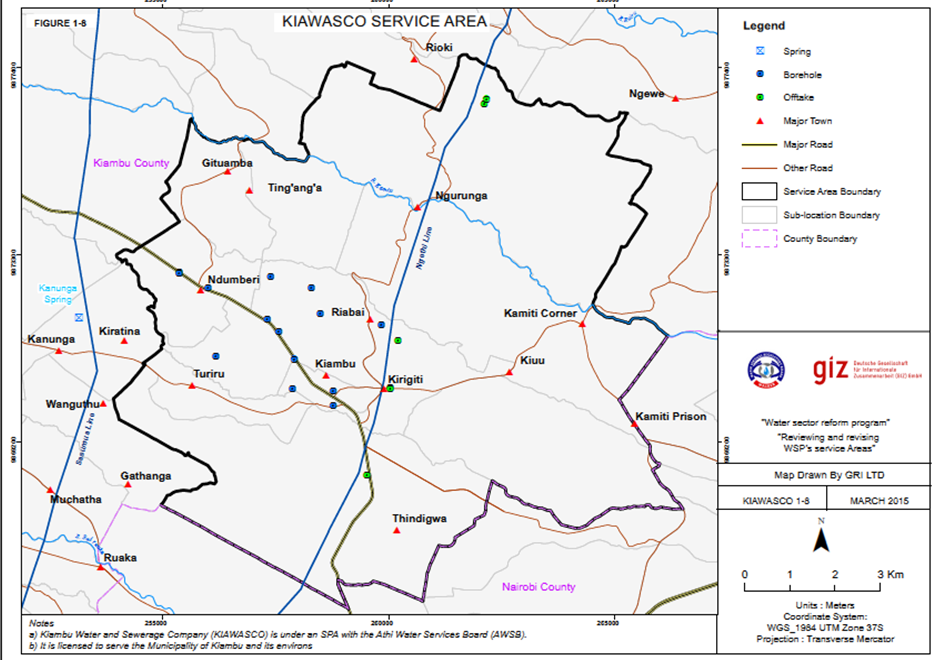Kamiti weir (intake and full treatment plant): production capacity of 4,000 cubic meters of water per day.
Riara weir (intake and full treatment plant): production capacity of 4,000 cubic meters of water per day.
19 boreholes (15 operational 4 dry)
Bulk supply from Nairobi Water Company
The company also offers sewerage services to its customers. It currently has one sewerage treatment plant, whose capacity is overstretched.
We recognize the important role played by community water projects in supplementing water supply in parts of our service area more so in Kiamumbi, Kanunga and Kirigiti.



